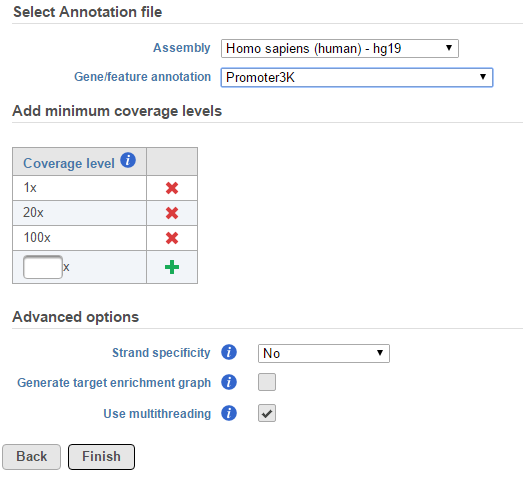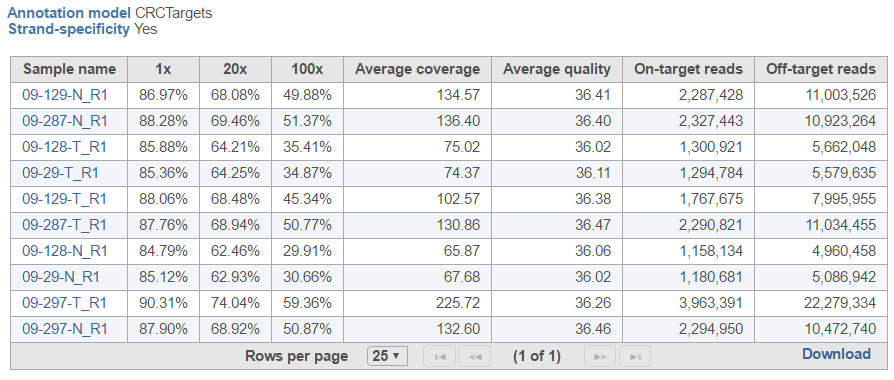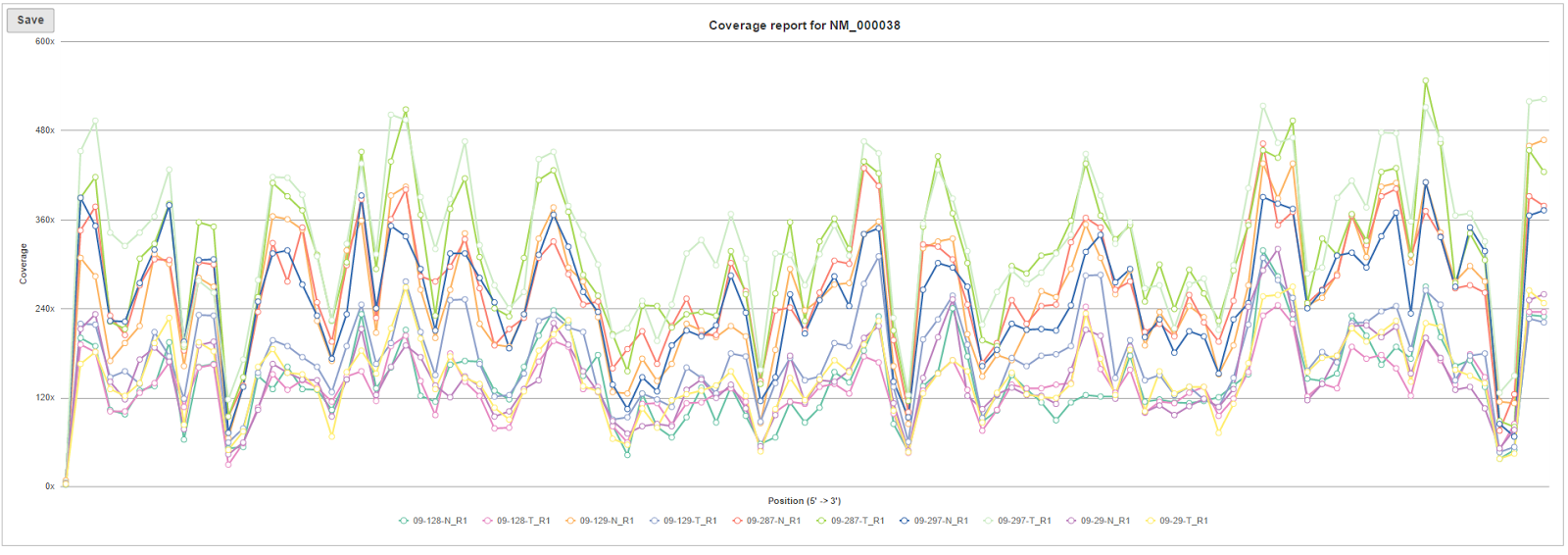Page History
Coverage report is also available for data nodes containing aligned reads (either Aligned reads or , Trimmed reads, or Filtered reads). The purpose of the report is to understand how well the genomic regions of interest are covered by sequencing reads for a particular analysis.
...
| Numbered figure captions | ||||
|---|---|---|---|---|
| ||||
Coverage report result page contains project-level overview and starts with a summary table, with one sample per row (Figure 2). The first few columns show the percentage of bases in the genomic features which are covered at the specified level (or higher) (default: 1×, 20×, 100×). Average coverage is defined as the sum of base calls of each base in the genomic features divided by the length of the genomic features. Similarly, Average quality is defined as the sum of average quality of those bases that cover the genomic features, divided by the length of covered genomic features. The last two columns show the number of On-tarted reads (overlapping the genomic features) and Off-target reads (not overlapping the features).
The Optional columns link enables import of any meta-data present in the data table (Data tab).
| Numbered figure captions | ||
|---|---|---|
|
...
| |||
Quantification of on- and off-target reads is also displayed in the column chart below the table (Figure 3), showing each sample as a separate column and fraction of on-/off-target reads on the y-axis.
...
Region coverage summary hyperlink opens a new page, with a table showing average coverage for each region (rows), across the samples (columns) (Figure 4).
| Numbered figure captions | ||||
|---|---|---|---|---|
| ||||
The browser icon in the right-most column () of the Region average coverage summary table opens the Coverage graph for the respective region (Figure 5). The horizontal axis is the normalized position within the genomic feature, represented as 1st to 100th percentile of the length of the feature. The vertical axis is coverage. Each line on the plot is a single sample, and the samples are listed below the plot.
| Numbered figure captions | ||||
|---|---|---|---|---|
| ||||
The Coverage summary (Figure 6) plot is an overview of coverage across of the targeted genomic features for all the samples in the project. Each line within the plot is a single sample, the horizontal axis is the normalized position within the genomic feature, represented as 1st to 100th percentile of the length of the feature, while the vertical axis show the average coverage (across all the features for a given sample).
| Numbered figure captions | ||||
|---|---|---|---|---|
| ||||
If you need more details about a sample, click on the sample name in the Coverage report table (Figure 67). The columns are as follows:
...




